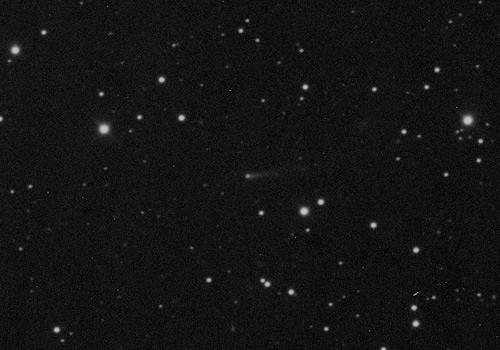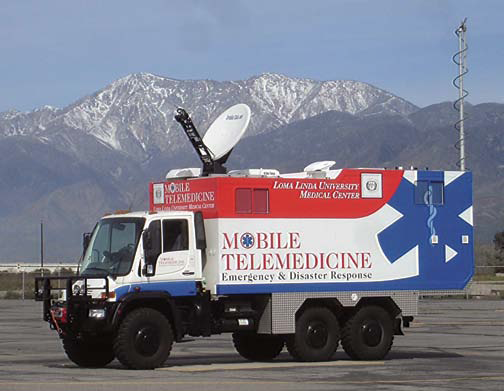WBMSAT New Bits 05/23/2014
Friday, May 23rd, 2014U.S. and European space chiefs urge public to look past incendiary Russian rhetoric and see the durable underlying value of the space station partnership.
[Space News – 05/23/2014]

Soyuz rocket with Fregat restartable upper stage – Credit: ESA/Starsem photo – Space News
Russian launch countdown resumes without Canadian satellite, carrying U.S., British and Norwegian satellites.
[Space News – 05/23/2014]
National Intelligence Director James Clapper hailed upstart launch services provider SpaceX during a keynote address, endorsing competition in the U.S. government launch industry.
[Space News – 05/23/2014]
Sierra Nevada Corporation (SNC) has successfully completed their latest milestone, a wind tunnel test, in the company’s NASA Commercial Crew Integrated Capability (CCiCap) agreement.
[SatNews ] 05/23/2014]
Europe’s work on the service module for NASA’s Orion crew-transport vehicle has made up most of the slip in schedule and is on track for delivery to NASA in time for a late 2017 launch.
[Space News – 05/23/2014]
Water was discovered in the SpaceX Dragon spacecraft that recently returned to Earth from a month-long stay at the international space station, but so far as NASA knew May 21, none of the agency’s cargo was damaged.
[Space News – 05/23/2014]
Antares’ AJ-26 engine, slated to power Orbital Sciences Cor[.’s 2015 mission to ISS, suffers test stand failure.
[Space News – 05/23/2014]

NROL-33 launch on Atlas % – Credit: ULA photo – Space News
An Atlas 5 rocket lifted off May 22 from Cape Canaveral Air Force Station in Florida carrying a classified payload for the U.S. National Reconnaissance Office (NRO).
[Space News – 05/22/2014]
SES Broadband Services announces partnership with Meanswhat to deliver satellite communications for multi-national enterprises and Governmental Agencies with branch offices or production facilities in remote areas.
[Satellite Evolution Group – 05/22/2014]
Millicom selecs Eutelsat Americas satellite capacity to support its recent entry into the satellite pay-TV market in Latin America.
[Yahoo Finance – 05/22/2014]
Commercial Launch Services (LMCLS) will launch the WorldView-3 commercial remote sensing spacecraft, placing it into orbit on August 13 for DigitalGlobe.
[SatNews – 05/22/2014]
Hughes is selected to power delivery of high-speed satellite internet service in Columbia by HISPASAT Colombia.
[Satellite Evolution Group – 05/22/2014]
ITC Global expands presence in Asia-Pacific, opening branch office in Singapore.
[Satelllite Evolution Group – 05/22/2014]
Gogo gets STC from the FAA and certification from the Japanese Civil Aviation Bureau (JCAB) to install Gogo’s Ku-satellite based connectivity service on Japan Airlines’ 767-300 aircraft.
[Satellite Evolution Group – 05/22/2014]
M7 Deutschland will acquire Kabelkiosk platform from Eutelsat.
[Satellite Evolution Group – 05/22/2014]
The United States, Australia, the United Kingdom and Canada have signed a memorandum of understanding to work more closely together on space situational awareness activities.
[Space News – 05/21/2014]
Eutelsat Americas aligns names of satellites acquired with Mexsat with the Eutelsat brand.
[Market Watch – 05/21/2014]
Yahsat gets Satcom Africa “Satellite Operator of the Year” award for 2014.
[Star Africa – 05/21/2014]
Orbital Scinces begins production of Thaicom 8 commercial communications satellite, to be the second built for Thaicom by Orbital.
[Satellite spotlight – 05/21/2014]
Markets and Markets study projects M2M satellite communication market to be worth $4.76 billion by 2019.
[Satellite Spotlight – 05/21/2014]
Cobham’s new Aviator 5 series airborne satellite communications system will support wide range of communication applications in both the cockpit and the cabin.
[SatNews – 05/21/2014]
HeliosNet selects Newtec to provide Business-to-Consumer and Business-to-Business VSAT services across Eastern Russia.
[Via Satellite – 05/21/2014]
“Global M2M Satellite Communications Market Report 2014 – 2019″ added to Research and Markets offering; ) market represents an interesting and potentially huge revenue stream for the satellite industry.
[Business Wire – 05/20/2014]
Under pressure from families of passengers of Malaysia Flight 370, Inmarsat confirms it will publish full record of communications received from the plane the day it disappeared.
[New York Times – 05/20/2014]
Australian Communications Minister and his Parliamentary Secretary give contradictory statements within 3 months regarding possible sale of NBN’s satellite infrastructure soon.
[Delimiter – 05/20/2014]
Human error likely led to the recent failure of a Proton-M rocket carrying Russian telecommunications satellite, a source close to the commission investigating the incident told RIA Novosti.
[Space News – 05/20/2014]
Orbit 2.4m and 3.7m three axis tracking antennas, with radomes for withstanding extreme environments, can be mounted on building roofs and eliminate keyhole effect while tracking low earth orbit satellites. [SatNews – 05/20/2014]
Airbus delivers X-band satellite communications capabilities using Airbus’ Skynet 5 constellation to four United Kingdom Mine Counter Measure Vessels in the Arabian Gulf.
[Via Satellite – 05/20/2014]
NSR report – satellite industry generated almost $35 billion in 2013, and is expected to deploy 1000+ satellites and generate $275 billion in next 10 years.
[Yahoo finance – 05/19/2014]
“The Military Communications Report 2014-2024″ now available on ASDReports judges the market to be worth $16.35 billion in 2014. [SatNews – 05/19/2014]

Competition shrinks with more mergers – Credit: AP – Think Progress
AT&T $49 billion offer to acquire DirecTV includes promise of net neutrality.
[Think Progress – 05/19/2014]

AFP Getty Images – Daily Mail
UFOs found in Chinese fields identified as space debris, after Russion rocket failed in satellite launch attempt.
[Daily Mail – 05/19/2014]
Satcom1 accredited as Inmarsat SwiftBroadband Distribution Partner, acheiving highest level of partnership with Inmarsat.
[Satellite Spotlight – 05/19/2014]
Lockheed Martin begins final assembly of new GOES-R U.s. weather satellite.
[Reuters – 05/18/2014]
Military missions simply cannot succeed without reliable communications – this means satellite technology is essential for operations.
[MilsatMagazine – May 2014]
[WBMSAT satellite communications consulting services
























